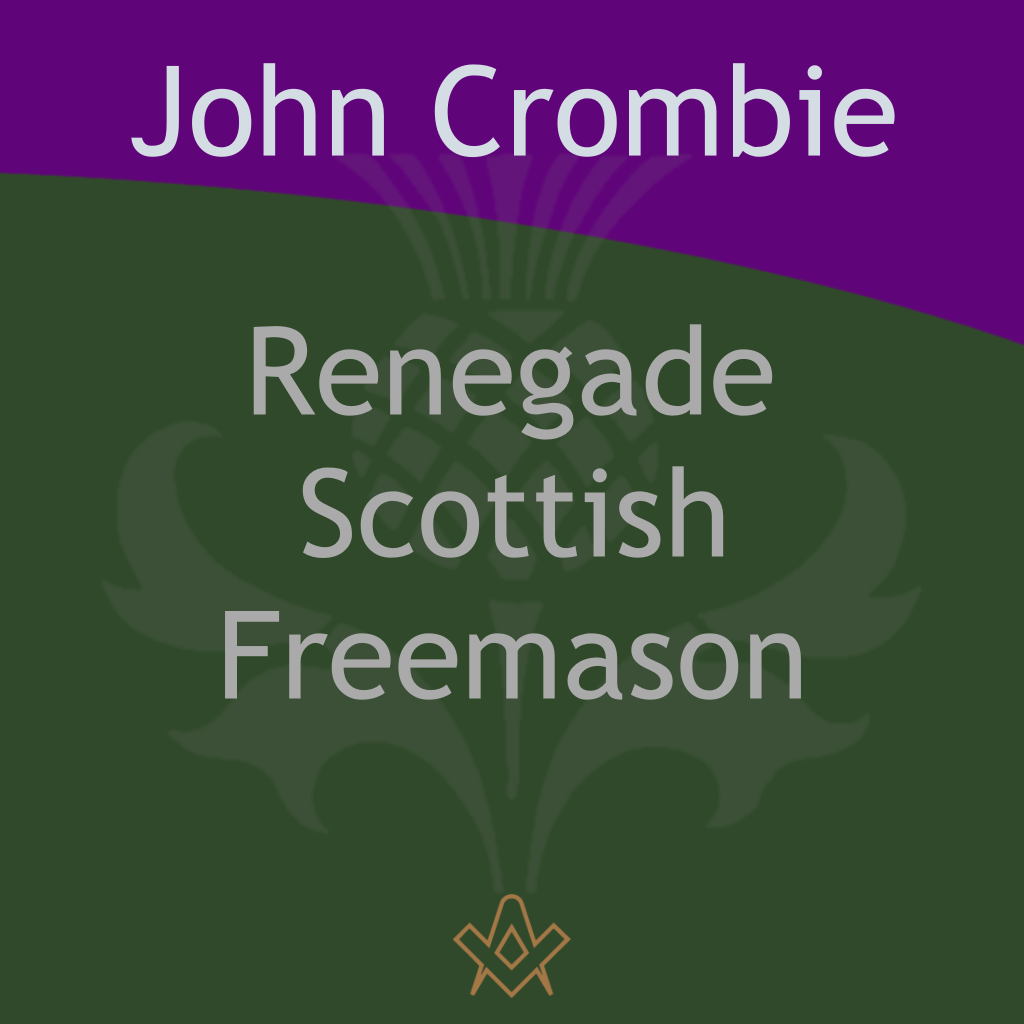The nineteenth century was a golden time for esoteric organisations, both Masonic, and quasi-Masonic.
It was a period that saw the resurgence, or the creation, of a number of Masonic Orders, by men of brilliance and creativity, spurred on by their thirst for ever more knowledge. The Red Cross of Constantine, and Societas Rosicruciana in Anglia [SRIA] are only two examples of those societies which came to prominence.
Many other organisations, not connected with Freemasonry, but nevertheless founded by Freemasons also saw the light of day, such as the Hermetic Order of the Golden Dawn.
Whilst much of that activity was taking place in England, there were Freemasons in Scotland taking a significant part in the growth of such Orders and societies. One such notable, was Brother John Crombie, who was a very senior and influential Freemason in Scotland, whose chief sphere of activity was in Aberdeen.
He was undoubtedly one of those creative minds referred to earlier, but he was also possessed of a fiercely determined and independent frame of mind, which led to him clashing with the Grand Lodge of Scotland, of which he was once a Junior Grand Warden.
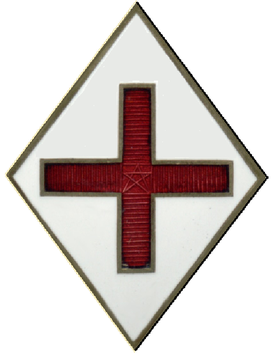
Societas Rosicruciana in Anglia logo
IMAGE LINKED: ©SRIA
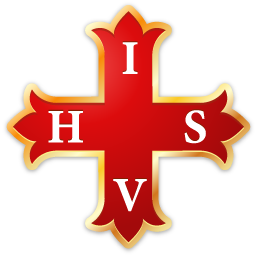
Red Cross of Constantine logo
IMAGE LINKED: ©Red Cross of Constantine
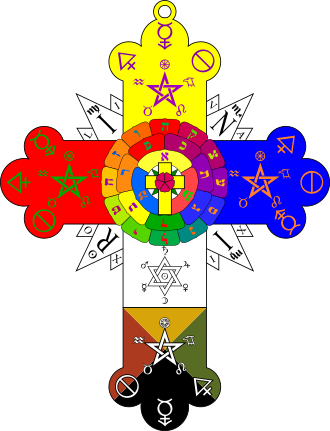
The Rose Cross Lamen of the Hermetic Order of the Golden Dawn, as worn by Adepts of the Rosae Rubae et Aureae Crucis, the inner order of the society.
IMAGE LINKED: Hermetic Order of the Golden Dawn
Whilst much of that activity was taking place in England, there were Freemasons in Scotland taking a significant part in the growth of such Orders and societies. One such notable, was Brother John Crombie, who was a very senior and influential Freemason in Scotland, whose chief sphere of activity was in Aberdeen.
He was undoubtedly one of those creative minds referred to earlier, but he was also possessed of a fiercely determined and independent frame of mind, which led to him clashing with the Grand Lodge of Scotland, of which he was once a Junior Grand Warden.
John Crombie was born in Aberdeen in 1833, son of ship owner John Crombie, and his wife Ann Morrison or Crombie. He is known to have had at least one sibling, a brother, James Morrison Crombie.
He was educated in Aberdeen, and in 1851 became a writer having served a form of apprenticeship under Robert Dyke, a member of the faculty of Advocates in Aberdeen.
In an apparent change of course, he subsequently qualified as a Chartered Accountant, initially specialising in bankruptcy matters, and had an office in the city.
In 1858, be became a Director of the Scottish Equitable Life Assurance Company and from that time he became very heavily involved in the finance industry, holding many posts.
He was Actuary and Secretary of the Aberdeen Mutual Assurance and Friendly Society, Aberdeen agent for Bank of London and National Provisional Assurance Association, Scottish Imperial Insurance Company, and the Manager of the Aberdeen Cooperative Property Investment Company.
He was Secretary of the Aberdeen Music Hall Choral Union and provided his professional services to the Music Hall and the Aberdeen Theatre and Opera House.
In 1861, he married Jessie Edward Leslie, daughter of Thomas Leslie and Mary Livingston, and they had several children.
Crombie was also heavily involved in local government; a member of Aberdeen Town Council in the 1880s; a senior magistrate and Police Commissioner in the city; as well as a Justice of the Peace.
He served as a volunteer in the Aberdeen Voluntary Artillery and Rifle Brigade where he attained the rank of Colonel. He also, served as their Secretary. [1]
Freemasonry
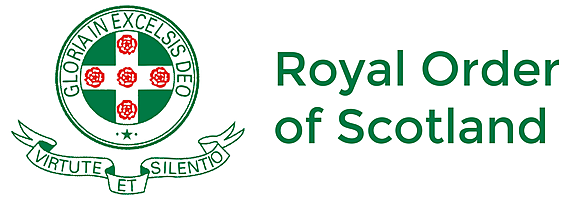
Royal Order of Scotland
IMAGE LINKED: ©Royal Order of Scotland
Crombie was also an extremely active Freemason, both at city and national level. There was hardly a Masonic Order that he was not a member of, and the Aberdeen Post Office Directory of 1891-1892 makes this abundantly clear from its listing of Masonic organisations in the city.
Crombie is listed as Eminent Commander of St George Aboyne Knights Templar Encampment; Right Worshipful Provincial Grand Master of the Royal Order of Scotland; Treasurer of Bon Accord Conclave No. 6, Red Cross of Constantine; Chief Adept of the Provincial College of Aberdeen and Neighbouring Counties, Rosicrucian Society of Scotland, (he is also known to have served on the High Council of the Society); Thrice Illustrious Master of Bon Accord Council No. 2 of Royal and Select Masters; Worthy Patron of Aberdeen Chapter No. 1, Order of the Eastern Star.
All these organisations were described then as meeting in the Masonic Hall at 12, Exchange Street, Aberdeen. He was also Provincial Grand Senior Warden of Aberdeen City in 1882 and served a period as Junior Grand Warden of the Grand Lodge of Scotland.
Crombie was also Grand Master of the Early Grand Encampment of Knights Templar between 1889 and 1891.
This was a body consisting of a number of Scottish Encampments that obtained a Charter from the Early Grand Encampment of Ireland in 1822 and was headquartered at Kilmarnock in Scotland.
On reading through the 1891-1892 Aberdeen Post Office list, one thing that stands out is that in a reference to his chairmanship of an Eastern Star Chapter, where he is referred to as Major Crombie; he has 33° , 90° and 96° immediately following his name.
This certainly does not refer to the Eastern Star, or any other mainstream Order, but relates to a Rite of Memphis Misraim, which has such a Degree system.
Indeed, the directory for 1893-1894 lists Crombie as Grand Master of the ‘Royal Masonic Rite’, which will be referred to hereunder. This entry lists Thomas Lawrence Shaw as Grand Secretary.
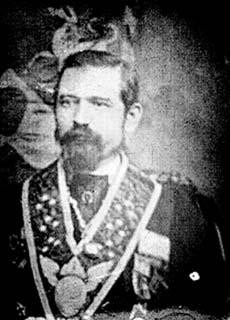
John Yarker (1833-1913)
IMAGE LINKED: wikimedia Attribution 4.0 International (CC BY 4.0)
A directory from 1875-1876, lists Shaw as Grand Examiner-General of the Sovereign Sanctuary, London, and Provincial Grand Master for Aberdeen, Kincardine, and Banff, for this ‘fringe’ branch of esoteric Freemasonry; although at this time, the Rite was limited to thirty-three degrees, and probably derived its authority from a charter received from famous esoteric Freemason, John Yarker, who had recently introduced such a Rite to England.
Antient and Primitive Rite of Memphis-Misraim
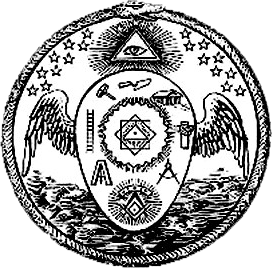
Antient and Primitive Rite of Memphis-Misraim
IMAGE LINKED: wikimedia Attribution 4.0 International (CC BY 4.0)
Brother George Draffen of Newington, a senior and well-respected Scottish Freemason and Masonic author, wrote briefly about these nineteenth century organisations. In this, he refers to, Matthew McBlain Thomson, a Scottish Freemason, who immigrated to America in the nineteenth century and was later imprisoned for fraudulently peddling spurious Masonic Degrees.
In his critique of Brother Ellic Howe’s paper on ‘Fringe Masonry in England’ which the latter presented to the Quatuor Coronati Research Lodge No. 2076, London, in 1972 he writes:
Yarker, something of a Masonic mountebank I fancy. Still, he’s a personage who could, with advantage, be investigated more thoroughly than has been done as yet. Probably his reputation, as Bro. Howe suggests, has put off research into his activities and the same applies to Mathew McBlain Thomson – one of Irwin’s correspondents…
Thomson’s predilection for spurious masonry can be illustrated by an extract from the ‘Scottish Freemason’
…for August 1894 – Of which Thomson was the editor – in which is listed a ‘Directory of High Grades’. Among those listed is ‘The Royal Masonic Rite’ which is stated to include: The Ancient and Primitive Oriental and Egyptian Reformed Rites, 4th to 33rd Degree inclusive; Rite of Mizraim [sic] 4th to 90th Degree; the Supreme Rite of Memphis and the Egyptian Masonic Memphis, 4th to 96th Degree inclusive: The Oriental Order of Sat B’hai introduced into Scotland under Charter from the Sovereign Sanctuary of America.’ The M.I.G.M. (presumably standing for Most Imperial Grand Master) is said to be a Lt-Colonel John Crombie. [2]
Draffen seems to dismiss this organisation as a figment of Thomson’s imagination, but as we can see, Crombie was proudly boasting his credentials in this Rite, albeit in an entry relating to a branch of the Eastern Star, and according to Thomson there was an Oriental Chapter, Senate and Council in Aberdeen as well as other branches in Scotland.
We know that other prominent members of the Scottish Craft were members of John Yarker’s various Orders, and that he obtained a Charter for what became his Ancient and Primitive Rite from a Harry J. Seymour, Grand Master General of the United States. Seymour, rightly or wrongly, was regarded by the mainstream bodies in that country as a ‘spurious Mason’, and ‘unworthy of credit’.
Yarker assumed an identical title in the United Kingdom; but Crombie in Aberdeen, most likely received a Charter to operate his Rite from another American, Darius Wilson, who provided him with it, in order to operate his Royal Masonic Rite in Scotland. In 1894, Crombie occupied the position of Very Imperial Grand Master of the Directory of the High Masonic Degrees of the Rite of Memphis for Scotland; so, the Rite was clearly more manifest than Draffen was prepared to acknowledge. [3]
Other Pursuits
Along with Thomas Lawrence Shaw, Crombie was actively involved with an organisation, based in Aberdeen, which was devoted to the study of the rituals of a large assortment of degrees and Orders, and not necessarily restricted to regular Freemasonry.
Indeed, the organisation is known to have taken an interest in the ritual of the ‘Knights of Pythias’, a non-Masonic American fraternal society.
Not much more is known about this organisation, but they corresponded widely with like-minded brethren throughout the world.
The organisation was known as the ‘Masonic Archaeological Institute of Scotland – Supreme Council of Side Degrees’, and given its fringe nature, may have been operated on a sub-rosa basis.
There appears to have been an English equivalent, headed by the famous esoteric Freemason, Major Francis George Irwin, a reputed member of an earlier manifestation of what would become the Hermetic Order of the Golden Dawn.
Irwin was Deputy Grand Master, and Vice-President of the Royal Scottish Rite of Adoption which was based in Aberdeen, with Crombie, Grand Master, and Shaw, Grand Secretary.
It is clear there was a close connection between Irwin and his fellow esoteric brothers in that city. In a letter dated 1 September,1887, Shaw wrote to Irwin from Aberdeen, stating:
Dear Bro. Irwin,
I sent you the Red Branch and Constantinople Rituals some days ago, also Palm & Shell (Instructions) to copy if you thought fit.
Constantinople is doing well here, don’t you think, with 30 members, and seven on the card for tomorrow’s meeting, and some three or more, waiting next meeting thereafter.
A proposal is on foot to organise Council No. 2 already, not as a rival council, but rather as a travelling body, to organise Councils over the country.
In another letter dated 28 December 1887, Shaw writes:
Dear Bro. Irwin,
Constantinople
In preparing Patent for Bro. Crombie, similar to the one sent to Bro. Bird, I require to know Bro. Bird’s Armorial device and motto, also the Seal he will adopt as ‘The Seal of the Supreme Council of England’ of the Order.
If he will leave the Seal to me, I will make it all right I think, but I must know his Crest (or adopted one) to place on the Shield of the Kt. with plum’d helmet, and the Motto to place on the Circle at top, in place of Excelsior, St Aubyn, to read ‘Excelsior’, (his (Bird’s) motto).
Ask Bro. Bird to let me have this early. By the way, he has overlooked that I asked him to kindly acknowledge receipt of his own Patent.
Constantinople relates to the Knights of Constantinople, a degree which is now worked within the Allied Masonic Degrees. Irwin is reputed to have received this degree in Malta in 1865.
This degree can be transmitted from person to person, and on his return to England Irwin did just that, conferring the degree on a number of other senior Freemasons, including the famous Masonic historian William James Hughan.
Irwin was a regular visitor to St Aubyn Lodge, No. 954, in Devonport, and conferred the degree on members of that lodge.
In time, various St Aubyn Councils of Knights of Constantinople, sprang up throughout the United Kingdom, including one in Aberdeen.
It seems likely that Irwin also initiated the Aberdeen brethren into the degree, and that Shaw was tasked to put the ritual in writing.
Publications and Controversy
Crombie also tried his hand at Masonic publishing and was responsible for a number of Masonic ritual books, usually along with fellow Chartered Accountant and Masonic colleague Alexander Inkson McConnochie.
One of these rituals was for his Knights Templar Encampment in Aberdeen entitled ‘Ritual for the Sole use of St. George Aboyne, Knights Templar Encampment No. 21’.
He also published a revised Order of the Eastern Star Ritual which was a hybrid of the Robert Morris’ Eastern Star ritual, and Robert Macoy’s Adoptive Rite ritual; with the idea, apparently, of conferring them in lecture form.
Crombie also issued Charters for working the Eastern Star Degree under the authority of what he styled ‘The Scottish Grand Council of Rites’ and a number were chartered throughout Scotland, including of course Aberdeen.
The pair also published a ritual for the Degrees of the Royal Order of Scotland, and one for the Royal Arch degrees, entitled The Red. For a time, the pair also edited the Aberdeenshire Masonic Reporter.
In 1881, Crombie and McConnochie published a ritual book on the Craft degrees. Despite his seniority in the Scottish Craft, he clashed with the Masonic authorities for publishing and refusing to withdraw this ritual, which is now a rare item.
For this, he was expelled from the Craft in Scotland. George Draffen noted that Crombie had not breached any law by publishing the ritual; however, it seems that on a title page, he had referred to himself as Junior Grand Warden, which The Grand Lodge of Scotland viewed as implying they had officially sanctioned the work.
Crombie disagreed with their interpretation, and in a fit of pique, refused to withdraw it from circulation. His intransigence brought a rather distinguished mainstream Masonic career to an end. [4]
There were later editions of the book (including a posthumous one in 1901) in which, many of his Masonic qualifications were proudly listed.
This affair is further highlighted by the fact that he wrote to the Grand Lodge of Scotland in 1890, asking to be released from his allegiance to that body. Grand Lodge declined this request declaring it ultra vires.
Shortly after, he tendered his resignation as Grand Master of the Early Grand Encampment of Scotland. His letter of resignation was read out at the body’s Quarterly Meeting in the Masonic Hall, Cambuslang, on 5 January 1891.
The Minutes of the meeting give no indication of the reasons for resignation, but it was agreed to defer a decision for three months, and to write to the Grand Master asking him to reconsider his position.
At their Quarterly Meeting held in Airdrie on 28 March 1891, presided over by aforementioned Matthew McBlain Thomson, it was agreed that a letter should be sent to Crombie informing him that the Order was being adversely affected by his disagreement with the Grand Lodge of Scotland.
No such letter was sent, Thomson explaining the reasons for not doing so at a subsequent meeting at Ayr on 27 June 1891, are not recorded. Crombie was replaced as Grand Master by Major Peter Spence, who was elected to the post on 19 September 1891. [5]
There is also reason to believe that his membership of, and ritual for, the St George Aboyne Encampment may also have caused him a problem.
In her history of the Encampment, Elizabeth Boyd notes that Crombie resigned from the Encampment in the 1890s, but notwithstanding, was a few months later apparently presiding as District Grand Prior over an Encampment of Sorrow Order of Service.
There were others of the same name in Aberdeen at that time, but Boyd’s belief that it was our John Crombie is probably correct.
She speculates that he may have resigned due to the fact the Grand body at that time, considered St George Aboyne Encampment irregular, and he did so in order to take up the role of District Grand Prior under their authority.
Clearly, Crombie was capable of behaving himself when it suited him. [6]
Non-Masonic Publications
Crombie’s friend and Masonic colleague, Alexander Inkson McConnochie, was quite an accomplished publisher in the north-east of Scotland, and issued his own books concerning towns in that part of the country, as well as on deerstalking.
He was also Crombie’s Secretary in the Royal Order of Scotland; Recorder in his Rosicrucian College; and Principal Conductor of Works in his Cryptic Council.
In addition to his many Masonic publications, Crombie wrote other books, often in collaboration with others.
These included one with P.H. Chalmers entitled Records of Bajeant Class: Marischal College Session 1854-55, and one with David Littlejohn: Professor John Cruickshank D.D. (1896); Print of a Report in Connection with the Testimonial to Dr Patrick Blaikie Smith; Preserved by Patients and Friends on his leaving Aberdeen (1896).
Conclusion
John Crombie is a fascinating figure from history. He was an extremely dedicated and experienced Freemason; a purveyor of Masonic degrees, who was also very influential in other walks of life.
He is little known today, perhaps due to his tendency to clash with authority, which inevitably resulted in him being marginalised.
Notwithstanding, his positive contributions, both to Masonic and civil society, far outweigh these considerations, and he deserves to be remembered with fraternal goodwill and affection.
He died at Aberdeen in 1898.
Foot Notes
Acknowledgements:
The author wishes to express his gratitude to the SRIA archives, for affording insight of correspondence between T.L. Shaw, and F.G. Irwin, extracts from which are referenced in this article.
[1] Thomas Alexander Lee, Seekers of Truth: The Scottish Founders of Modern Public Accountancy (Bingley, UK: Emerald Group Publishing, 2006), 112-14.
[2] George S. Draffen, Response to E. Howe’s ‘Fringe Masonry in England’, AQC 85 (1972), 284.
[3] William D. Moore, ‘Darius Wilson, Confidence Schemes, and American Fraternalism 1869-1926’. Journal for Research into Freemasonry and Fraternalism 3 (2012).
[4] G.S. Draffen of Newington, Scottish Masonic Periodicals, AQC 92 (1979), 195.
[5] G. S. Draffen, Pour La Foy, David Winter & Son Ltd. Dundee (1949) 119.
[6] E.J. Boyd, ‘A Brief History of the Knights of the Temple and of the Preceptory and Priory of St. George Aboyne, 1794-1994,private paper, (1994)
Article by: Kenneth C. Jack
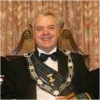
Kenneth C. Jack FPS is an enthusiastic Masonic researcher/writer from Highland Perthshire in Scotland.
He is Past Master of a Craft Lodge, Past First Principal of a Royal Arch Chapter, Past Most-Wise Sovereign of a Sovereign Chapter of Princes Rose Croix.
He has been extensively published in various Masonic periodicals throughout the world including: The Ashlar, The Square, The Scottish Rite Journal, Masonic Magazine, Philalethes Journal, and the annual transactions of various Masonic bodies.
Kenneth is a Fellow of the Philalethes Society, a highly prestigious Masonic research body based in the USA.
Recent Articles: Kenneth C. Jack
 Observations on the History of Masonic Research Archaeology is often associated with uncovering ancient tombs and fossilized remains, but it goes beyond that. In a Masonic context, archaeology can be used to study and analyze the material culture of Freemasonry, providing insight into its history and development. This article will explore the emergence and evolution of Masonic research, shedding light on the challenges faced by this ancient society in the modern world. |
 Anthony O'Neal Haye – Freemason, Poet, Author and Magus Discover the untold story of Anthony O’Neal Haye, a revered Scottish Freemason and Poet Laureate of Lodge Canongate Kilwinning No. 2 in Edinburgh. Beyond his Masonic achievements, Haye was a prolific author, delving deep into the history of the Knights Templar and leaving an indelible mark on Scottish Freemasonry. Dive into the life of a man who, despite his humble beginnings, rose to prominence in both Masonic and literary circles, leaving a legacy that continues to inspire. |
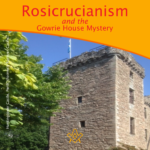 Rosicrucianism and the Gowrie House Mystery Unearth the mystifying intersections of Rosicrucianism and the infamous Gowrie House Mystery. Dive into speculative claims of sacred knowledge, royal theft, and a Masonic conspiracy, harking back to a fateful day in 1600. As we delve into this enthralling enigma, we challenge everything you thought you knew about this historical thriller. A paper by Kenneth Jack |
 Thomas Telford's Masonic Bridge of Dunkeld Of course, there is no such thing as a ‘Masonic Bridge’; but if any bridge is deserving of such an epithet, then the Bridge of Dunkeld is surely it. Designed by Scotsman Thomas Telford, one of the most famous Freemasons in history. |
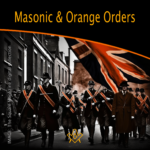 The masonic and orange orders: fraternal twins or public misperception? “Who’s the Mason in the black?” |
 Kenneth Jack's research reveals James Murray, 2nd Duke of Atholl – the 'lost Grand Master' |
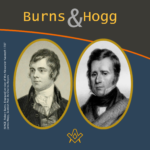 An Oration delivered to the Annual Burns and Hogg Festival, at Lodge Canongate Kilwinning, No. 2, Edinburgh, on 24 January 2018. By Bro. Kenneth C. Jack, FSAScot FPS, Past Master, Lodge St. Andrew, No. 814, Pitlochry. |
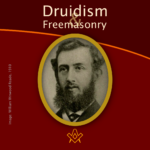 William Winwood Reade was a Scottish philosopher, historian, anthropologist, and explorer born in Crieff, Perthshire, Scotland. The following article by Kenneth Jack, provides some hints that William may have been a Freemason, but there is presently no definitive evidence he was. |
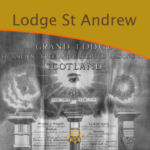 What's in a name? A brief history of the first Scottish Lodge in Australia - By Brother Kenneth C. Jack, Past Master, Lodge St. Andrew, No. 814, Pitlochry |
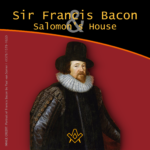 Sir Francis Bacon and Salomon’s House Does Sir Francis Bacon's book "The New Atlantis" indicate that he was a Rosicrucian, and most likely a Freemason too? Article by Kenneth Jack |
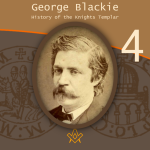 George Blackie – The History of the Knights Templar P.4 The final part in the serialisation of George Blackie's 'History of the Knights Templar and the Sublime Teachings of the Order' transcribed by Kenneth Jack. |
 George Blackie – The History of the Knights Templar P.3 Third part in the serialisation of George Blackie's 'History of the Knights Templar and the Sublime Teachings of the Order' transcribed by Kenneth Jack. |
 George Blackie – The History of the Knights Templar P.2 Second part in the serialisation of George Blackie's 'History of the Knights Templar and the Sublime Teachings of the Order' transcribed by Kenneth Jack. |
 George Blackie – The History of the Knights Templar P.1 First part in the serialisation of George Blackie's History of the Knights Templar and the Sublime Teachings of the Order – by Kenneth Jack |
 Little known as a Freemason, Bro Dr Robert ‘The Bulldog’ Irvine remains a Scottish rugby legend, and his feat of appearing in 10 consecutive international matches against England has only been surpassed once in 140 years by Sandy Carmichael. |
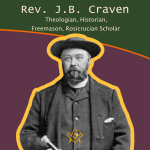 Rev. J.B. Craven: Theologian, Historian, Freemason, And Rosicrucian Scholar Archdeacon James Brown Craven is one of those unsung heroes of Scottish Freemasonry about whom very little has been previously written – here Kenneth Jack explores the life and works of this remarkable esoteric Christian. |
 Discover the powerful family of William Schaw, known as the 'Father of Freemasonry' |
 This month, Kenneth Jack invites us to look at the life of Sir William Peck; - astronomer, Freemason and inventor of the world's first electric car. A truly fascinating life story. |
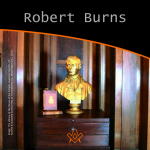 A Tribute to Scotland's Bard – The William Robertson Smith Collection With Burns' Night approaching, we pay tribute to Scotland's most famous Bard – The William Robertson Smith Collection |
 The Joy of Masonic Book Collecting Book purchasing and collecting is a great joy in its own right, but when a little extra something reveals itself on purchase; particularly with regards to older, rarer titles.. |
 Masons, Magus', and Monks of St Giles - who were the Birrell family of Scottish Freemasonry? |
 The 6th Duke of Atholl - Chieftain, Grand Master, and a Memorial to Remember In 1865, why did over 500 Scottish Freemasons climb a hill in Perthshire carrying working tools, corn, oil and wine? Author Kenneth Jack retraces their steps, and reveals all. |
 Charles Mackay: Freemason, Journalist, Writer Kenneth Jack looks at life of Bro Charles Mackay: Freemason, Journalist, Writer, Poet; and Author of ‘Tubal Cain’. |
 A Mother Lodge and a Connection Uncovered, a claim that Sir Robert Moray was the first speculative Freemason to be initiated on English soil. |
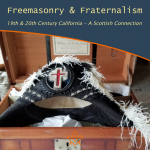 What is it that connects a very old, well-known Crieff family, with a former President of the United States of America? |
 The life of Bro. Cattanach, a theosophist occultist and Scottish Freemason |
 The Mysterious Walled Garden of Edzell Castle Explore the mysterious walled garden steeped in Freemasonry, Rosicrucianism, and Hermeticism. |
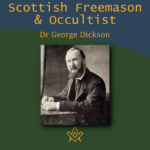 Dr. George Dickson: Scottish Freemason and Occultist Bro. Kenneth explores the life of Dr George Dickson a Scottish Freemason and Occultist |
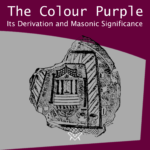 The Colour Purple - Its Derivation and Masonic Significance What is the colour purple with regards to Freemasonry? The colour is certainly significant within the Royal Arch series of degrees being emblematical of Union. |
 Bridging the Mainstream and the Fringe Edward MacBean bridging mainstream Freemasonry with the fringe esoteric branches of Freemasonry |
 Freemasonry in the Works of John Steinbeck We examine Freemasonry in the Works of John Steinbeck |
 Renegade Scottish Freemason - John Crombie Who was John Crombie and why was he a 'renegade'? |
 Scottish Witchcraft And The Third Degree How is Witchcraft connected to the Scottish Third Degree |
masonic knowledge
to be a better citizen of the world
share the square with two brothers

click image to open email app on mobile device
Tubal Cain
Masonic Apron NFT
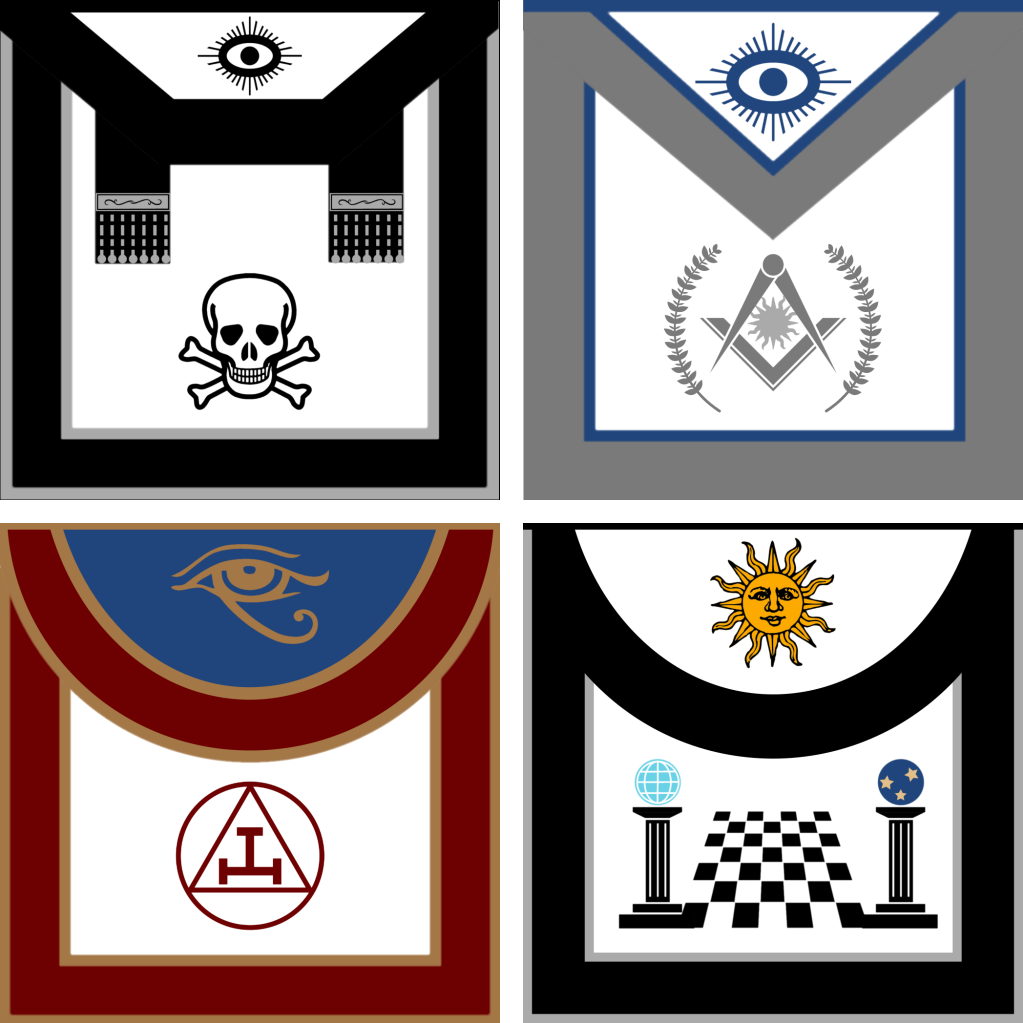


Each NFT includes the JPEG image plus a full size masonic apron and shipping worldwide
